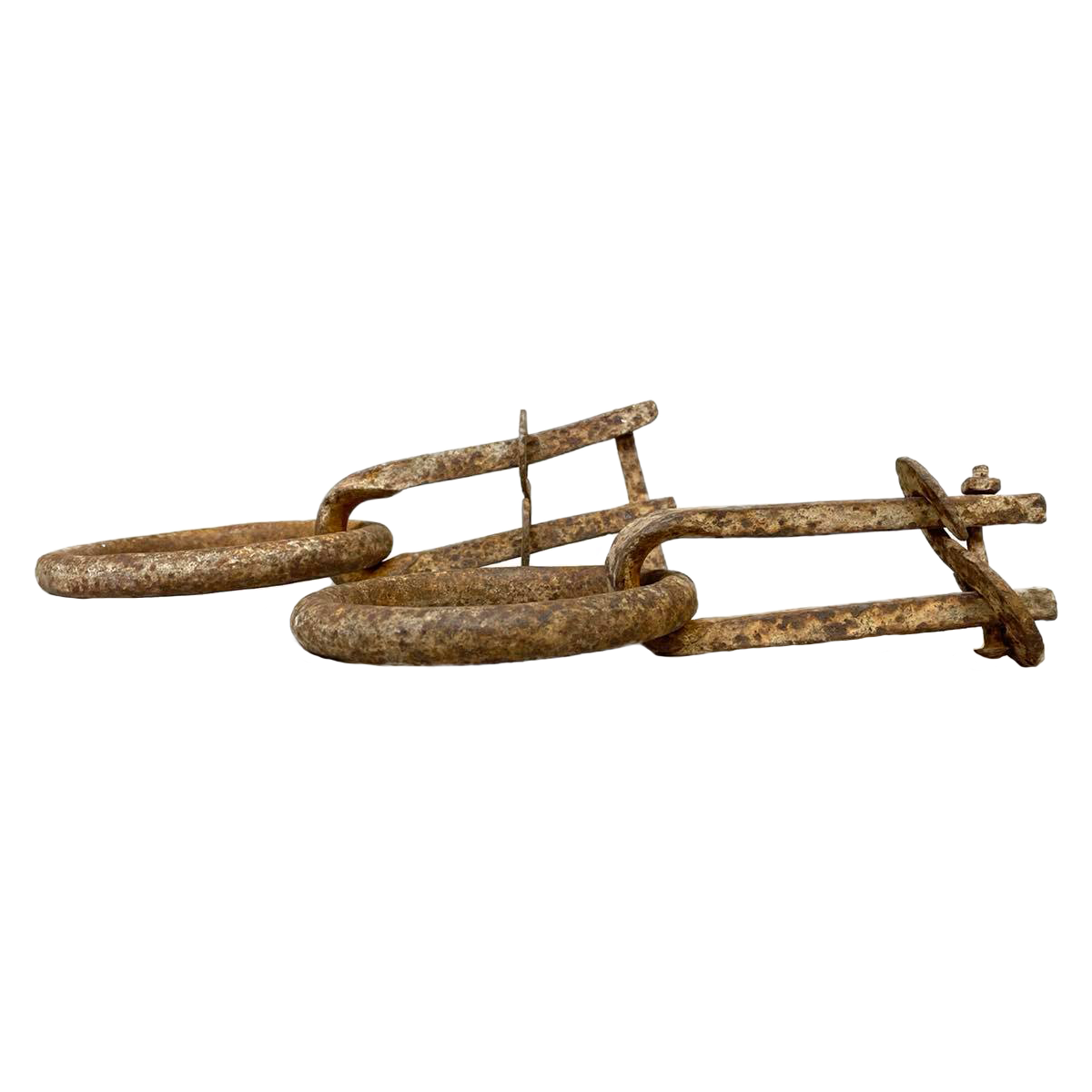Going to the gallows: a civil war collection tale
Cool crisp mornings, shorter days and leaves falling from trees. All these things remind us it is fall once again and with the approach of Halloween, we are naturally drawn to the dark, gothic, and macabre parts of history. In museum collections we think of those pieces in our storage or on display which have a darker history or a sadder story.
For us at the Frazier History Museum, one of those pieces is the gallows rings from our Civil War Collection. These rings, used for executing prisoners by hanging, are from the Tennessee Prison, which was located on Church St., Nashville, TN. One of the prisoners executed on these gallows rings was Champ Ferguson. Champ Ferguson was one of only two Confederate soldiers formally tried, convicted, and executed for war crimes at the end of the Civil War. The other man was Henry Wirz who was in charge of the several prisoner war camps, the worst being Andersonville.
Champ Ferguson joined the Confederate army as a private and fought at Mills Springs, Kentucky. By April of 1862, Ferguson had raised his own independent company. Under the guise of a Confederated Ranger, he turned his energy towards terrorizing the pro-Union population of Eastern Tennessee and Kentucky. Unconcerned with the rules of military discipline, Ferguson acquired a reputation for indiscriminately killing soldiers as well as civilians, who supported the Union. At one point during the war, he was even arrested and imprisoned by the Confederate Army on suspicion of murder but was ultimately released due to lack of evidence.
After the war, Champ Ferguson returned to his farm in Tennessee but was arrested on May 23, 1865, by Federal authorities and taken to Nashville for his trial. Ferguson was tried by a military tribunal and charged with murdering an astounding 53 men, though Ferguson himself, estimated that he had actually killed roughly 100 men. Numerous witnesses were called including many who served with him. Ferguson himself express no remorse for his actions and defended his actions as his military duty.
Champ Ferguson was found guilty of war crimes and was executed on October 20, 1865.
So how did these gallows rings come to the Frazier History Museum? These gallows rings were taken from the gallows at the Tennessee prison in 1883 by William Fuson Dyer, the first director of Information of the Tennessee Depart of Corrections, when the prison moved to a new location. The gallows rings were then passed down through the Dyer family until 2009 when they went up for auction and the Frazier History Museum acquired them. Since then, they have been a part of the Frazier’s permanent artifact collections to help us to tell the story of the Civil War.
-Tish Boyer, Collections Manager & Registrar



